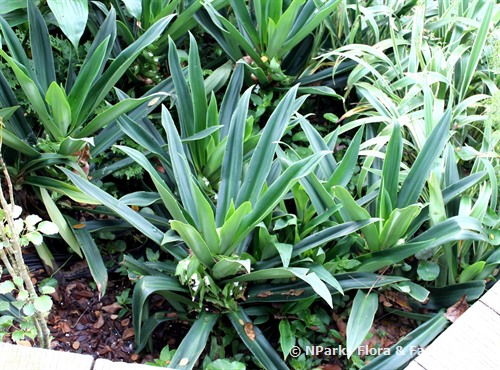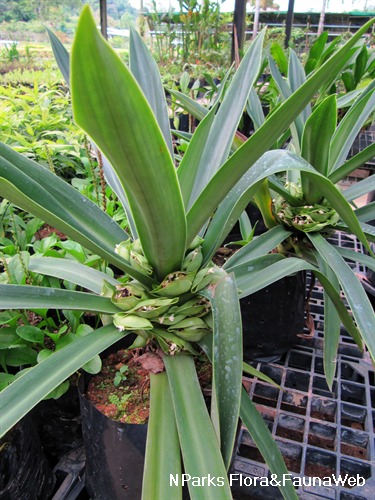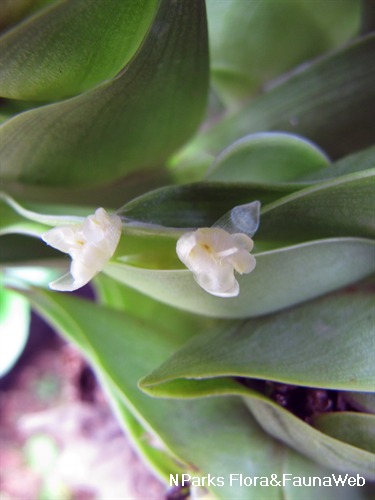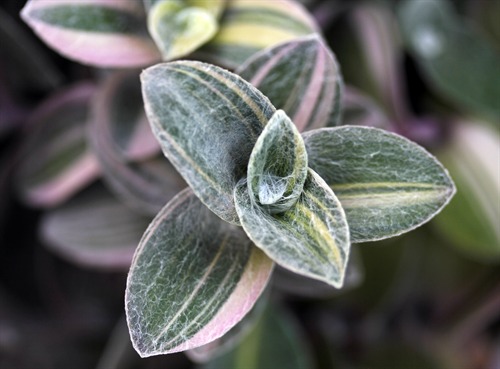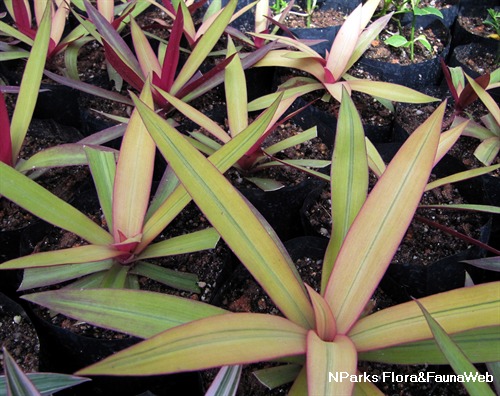
Back
Tradescantia spathacea (green form)
| Family Name: | Commelinaceae |
| Common Name: | Boat Lily, Oyster Plant, 荷包花 |
Name
Classifications and Characteristics
| Plant Division | Angiosperms (Flowering Seed Plants) (Monocotyledon) |
|---|---|
| Plant Growth Form | Herbaceous Plant |
| Lifespan (in Singapore) | Perennial |
Biogeography
| Local Conservation Status | Non-native (Horticultural / Cultivated Only) |
|---|
Description and Ethnobotany
| Growth Form | It is a semi-epiphytic herbaceous shrub with underground rhizomes, and has a clump-forming growth habit. |
|---|---|
| Foliage | Its leaves are green and fleshy, sword-shaped and arranged in a rosette form. |
| Flowers | Its flowers are small and white, nested in the boat-shaped bracts located at the leaf axils. |
| Etymology | Genus epithet 'Tradescantia' named after John Tradescant (died 1638), gardener to King Charles I of England. Species epithet 'spathacea' means 'with a spathe', describing the spathe-like bract holding the flowers. |
Landscaping Features
| Desirable Plant Features | Ornamental Foliage, Ornamental Form |
|---|---|
| Landscape Uses | General, Parks & Gardens, Suitable for Rooftops |
| Usage Hazard - Cons | Irritant - Sap |
| Usage Hazard - Cons Remarks | Astringent sap may cause stinging and itching in susceptible individuals and animals. |
Plant Care and Propagation
| Light Preference | Full Sun, Semi-Shade |
|---|---|
| Water Preference | Moderate Water |
| Rootzone Tolerance | Drought Tolerant, Moist Soils, Well-Drained Soils, Fertile Loamy Soils |
| Propagation Method | Division |
Foliar
| Mature Foliage Colour(s) | Green |
|---|---|
| Mature Foliage Texture(s) | Thick |
| Foliar Shape(s) | Non-Palm Foliage (Lanceolate) |
Floral (Angiosperm)
| Flower Colour(s) | White |
|---|
Image Repository
Others
| Master ID | 31634 |
|---|---|
| Species ID | 6033 |
| Flora Disclaimer | The information in this website has been compiled from reliable sources, such as reference works on medicinal plants. It is not a substitute for medical advice or treatment and NParks does not purport to provide any medical advice. Readers should always consult his/her physician before using or consuming a plant for medicinal purposes. |

